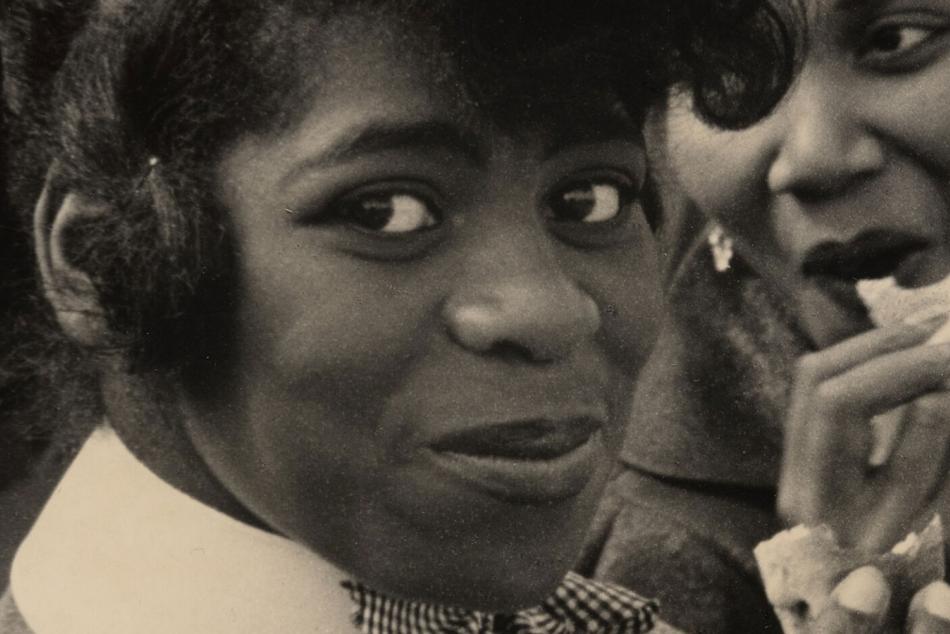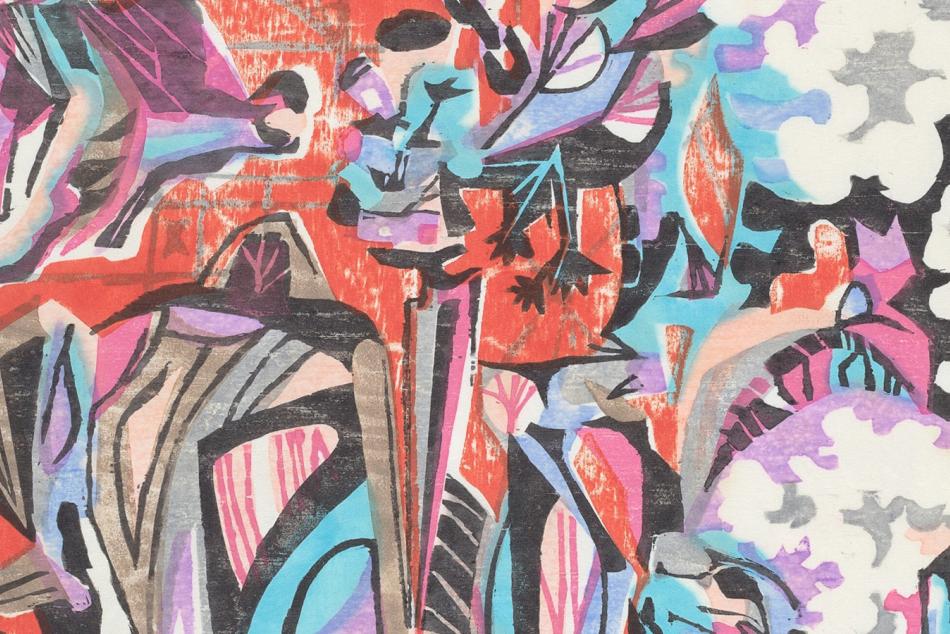
Food for Thought
Historians, food journalists, poets, chefs, and farmers riff on food-related works of art in our collection.
Read takes on art’s connection to food, consumption, and culinary creativity by authors from baker Cheryl Day to “Top Chef” finalist Adrienne Cheatham.

Article: Dressing for Dinner in the Gilded Age
This 19th-century dinner dress captured in the Index of American Design gives us a glimpse of how the wealthy dressed for dinner.

Article: Enjoy a Poem Inspired by Emien Etting’s “Flying Fruit”
Poet Aimee Nezhukumatathil sees a love story in this print by American artist Emien Etting.

Article: Introducing the Food for Thought Series
In this series, chefs, farmers, historians, scholars, and other thinkers share their takes on food, consumption, cooking, and eating.

Article: Dr. Martin Luther King Jr.’s Table: Breaking Bread in Troubled Times
A deeper look at how photography became a tool for the Civil Rights leader.

Article: Making Pictures of the Animals We Eat
When Dutch artist Willem van Aelst painted dead animals, did he use the images to grapple with the full circle of life?

Article: Eldzier Cortor Takes Us Inside the Slaughterhouse
Through his surrealist woodcut, Cortor considers the relationship between humans and animals and tells the stories of Black bodies.

Article: The Diner on the Edge of Civilization: Richard Misrach’s Photograph of Outdoor Dining
Ligaya Mishan, a food and travel writer for the New York Times, reflects on an image of a surreal restaurant setting.

Article: An Expert Baker’s Take on “Cakes” by Wayne Thiebaud
The painting inspires baker and author Cheryl Day to recall the dessert’s place in her life—and in her family’s history.

Article: What Did We Eat Before Colonization? A Native Chef and Artist Connect Over Plant Knowledge
Chef and Native American food historian Loretta Barett Oden reflects on her friendship with artist G. Peter Jemison.
You may also like

West to East
Discover how artists across America have been inspired by their communities and the places they call home.

Stories
Read, watch, or listen to inspiring stories about art and creativity.


